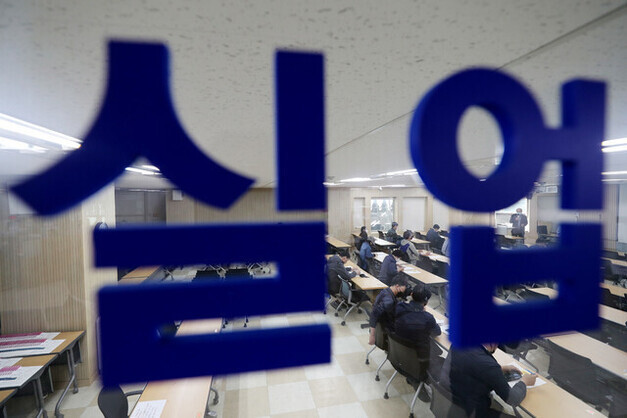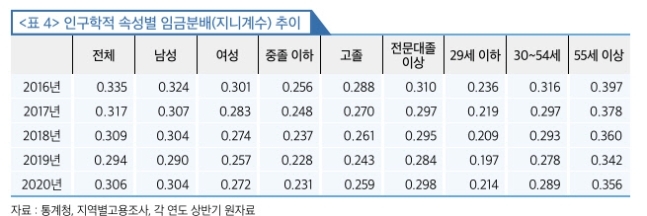Labor income gap widened amid COVID-19 pandemic: report
By Ock Hyun-juPublished : Jan. 25, 2021 - 14:31

The labor income gap among wage earners in South Korea worsened last year due to the COVID-19 pandemic, a government report showed, despite narrower disparities in disposable income under the Moon Jae-in administration.
The Gini coefficient -- a measure of income inequality within a population -- went up slightly to 0.306 last year when calculated on the basis of hourly labor income, according to a report from the Korea Employment Information Service. The report was based on employment data from Statistics Korea for the first half of each year from 2016 to 2020.
The report only looks at labor income inequality among wage earners, using the Gini index, without taking into account other types of income such as business income and property income.
The Gini coefficient is based on a comparison of cumulative proportions of the population against cumulative proportions of the income they receive, and it ranges between 0 in the case of perfect equality and 1 in the case of perfect inequality.
“A rise in COVID-19 patients and the social distancing campaign appear to have had a big impact on the income disparity that had worsened in 2020,” Cho Min-soo, a researcher from the KEIS, wrote in the report.
Labor income disparity widened in all provinces and cities in 2020, compared with the previous year, except for Gangwon Province, Ulsan and Sejong. Incheon saw the biggest increase in income inequality, followed by the resort island of Jeju.
The reason for the regional differences in the level of income inequality is that telecommuting-friendly jobs and industries are unevenly distributed across the country, Cho pointed out.
“The income disparity is wider in regions relying more on the in-person service industry -- such as tourism, leisure and lodging,” Cho added.

Those aged 20 or younger appear to have been hit harder by the coronavirus outbreak in terms of labor income. The Gini index for the age group rose by 0.017, compared with 0.011 for those aged between 30 and 54 and 0.014 for those aged 55 or over.
Overall income inequality has narrowed steadily under the Moon administration, with the Gini coefficient for labor income having fallen from 0.335 in 2016 to 0.317 in 2017, 0.309 in 2018 and 0.294 in 2019.
By Ock Hyun-ju (laeticia.ock@heraldcorp.com)
-
Articles by Ock Hyun-ju









![[Kim Seong-kon] Democracy and the future of South Korea](http://res.heraldm.com/phpwas/restmb_idxmake.php?idx=644&simg=/content/image/2024/04/16/20240416050802_0.jpg&u=)








![[KH Explains] Hyundai's full hybrid edge to pay off amid slow transition to pure EVs](http://res.heraldm.com/phpwas/restmb_idxmake.php?idx=652&simg=/content/image/2024/04/18/20240418050645_0.jpg&u=20240418181020)

![[Today’s K-pop] Zico drops snippet of collaboration with Jennie](http://res.heraldm.com/phpwas/restmb_idxmake.php?idx=642&simg=/content/image/2024/04/18/20240418050702_0.jpg&u=)